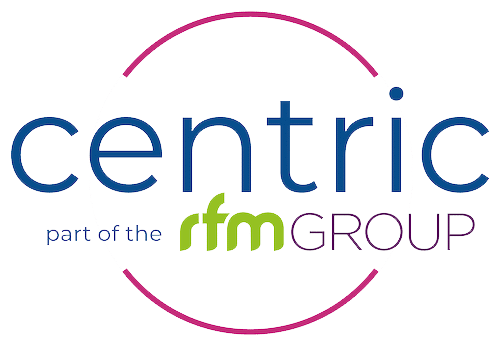Energy-efficient lighting refers to the use of light bulbs and fixtures that use less energy to produce the same amount of light as traditional incandescent bulbs. These types of lighting can help to reduce energy consumption, lower energy bills, and reduce greenhouse gas emissions.

Ceiling with bright lights in a modern warehouse, shopping centre building, office or another commercial real estate object. Directional LED lights on rails under the ceiling. Tinted.
LEDs
One of the most common types of energy-efficient lighting is LED (light-emitting diode) lighting. LED bulbs use about 75% less energy and last up to 25 times longer than incandescent bulbs. They also produce very little heat, making them a safer and more efficient choice for lighting.

LED light Power saving concept. Asia man changing compact-fluorescent (CFL) bulbs with a new bulb.
CFLs
Another type of energy-efficient lighting is compact fluorescent lamps (CFLs). These bulbs use about 75% less energy and last up to 10 times longer than incandescent bulbs. They also produce less heat, making them a good choice for lighting.
Dimmer Switches & Motion Sensors
In addition to using energy-efficient bulbs, there are other ways to make your lighting more energy efficient. For example, you can use dimmer switches to adjust the brightness of your lights and reduce energy use. You can also use motion sensors to turn lights off when they are not needed, such as in rooms that are not being used.
Environmental Benefits
It’s important to note that energy-efficient lighting is not just about saving energy and money. It also has environmental benefits. By using energy-efficient lighting, you can help to reduce greenhouse gas emissions, which contribute to climate change.
The environmental benefits of energy-efficient lighting are significant. By using energy-efficient lighting, you can help to reduce greenhouse gas emissions, which contribute to climate change.
Traditional incandescent bulbs are not very energy efficient, as they use a lot of energy to produce light and generate a lot of heat. This energy use contributes to the production of greenhouse gases, such as carbon dioxide, which are released into the atmosphere and trap heat, leading to global warming.
On the other hand, energy-efficient bulbs, such as LED and CFL bulbs, use much less energy to produce the same amount of light as incandescent bulbs. This means that they generate fewer greenhouse gases and have a lower impact on the environment.
In addition, energy-efficient lighting can help to reduce energy consumption and lower energy bills, which can also have environmental benefits. For example, by using less energy, you can help to reduce the demand for fossil fuels, which are a major source of greenhouse gas emissions.
Overall, the environmental benefits of energy-efficient lighting are numerous and significant.
In conclusion, energy-efficient lighting is an important step towards reducing energy consumption and lowering energy bills. They should feature as part of any planned fit-out or refurbishment. It’s also a great way to help the environment by reducing greenhouse gas emissions. By making the switch to energy-efficient bulbs and using other energy-saving measures, you can do your part to create a more sustainable future.
FAQs Energy-Efficient Lighting
Here are some frequently asked questions about energy-efficient lighting:
-
What is energy-efficient lighting?
Energy-efficient lighting is lighting that uses less energy to produce the same amount of light as traditional lighting technologies. This can help to reduce energy costs and greenhouse gas emissions and contribute to a more sustainable and environmentally friendly lighting solution.
-
What are some examples of energy-efficient lighting technologies?
Some examples of energy-efficient lighting technologies include:
- LED (light-emitting diode) bulbs: LED bulbs use significantly less energy than traditional incandescent bulbs and have a longer lifespan, making them a more energy-efficient and cost-effective lighting solution.
- Fluorescent lamps: Fluorescent lamps use less energy than incandescent bulbs and have a longer lifespan, but they contain mercury and can take longer to warm up.
- Compact fluorescent lamps (CFLs): CFLs are a more efficient alternative to traditional incandescent bulbs and are suitable for a range of applications.
- Light-emitting plasma (LEP) bulbs: LEP bulbs are a newer type of energy-efficient lighting technology that uses a plasma discharge to produce light, and are more efficient than traditional incandescent bulbs.
-
What are some benefits of using energy-efficient lighting?
There are a number of benefits to using energy-efficient lighting, including:
- Reduced energy costs: Energy-efficient lighting uses less energy to produce the same amount of light, which can result in significant energy cost savings over time.
- Longer lifespan: Energy-efficient lighting technologies generally have a longer lifespan than traditional lighting technologies, which can result in further cost savings over time.
- Reduced environmental impact: Energy-efficient lighting can help to reduce greenhouse gas emissions and other environmental impacts, as it uses less energy and generates fewer emissions.
4. How can energy-efficient lighting be implemented in an office setting?
- Improved lighting quality: Some energy-efficient lighting technologies, such as LED bulbs, offer improved lighting quality and a more natural colour spectrum compared to traditional technologies.

